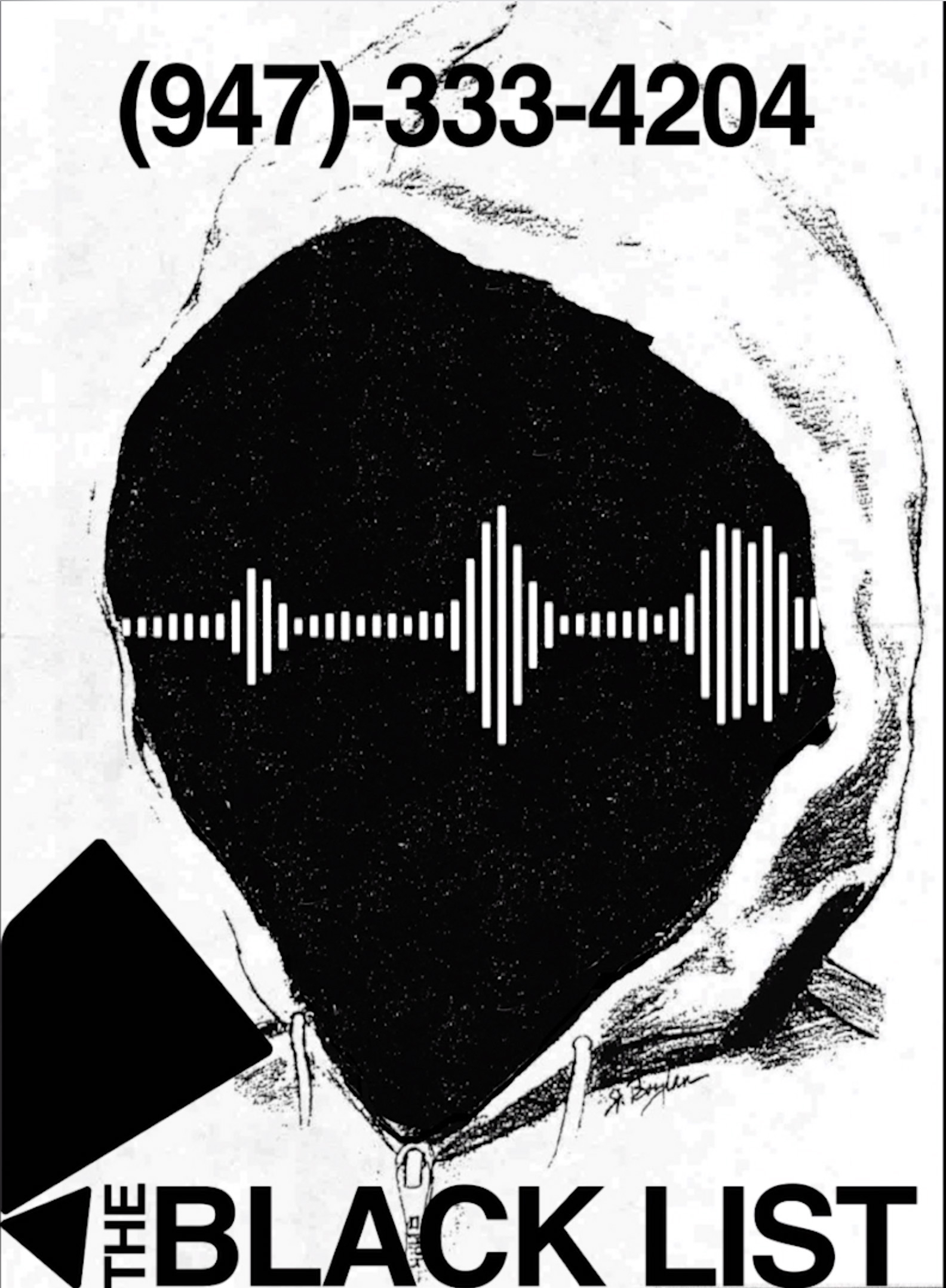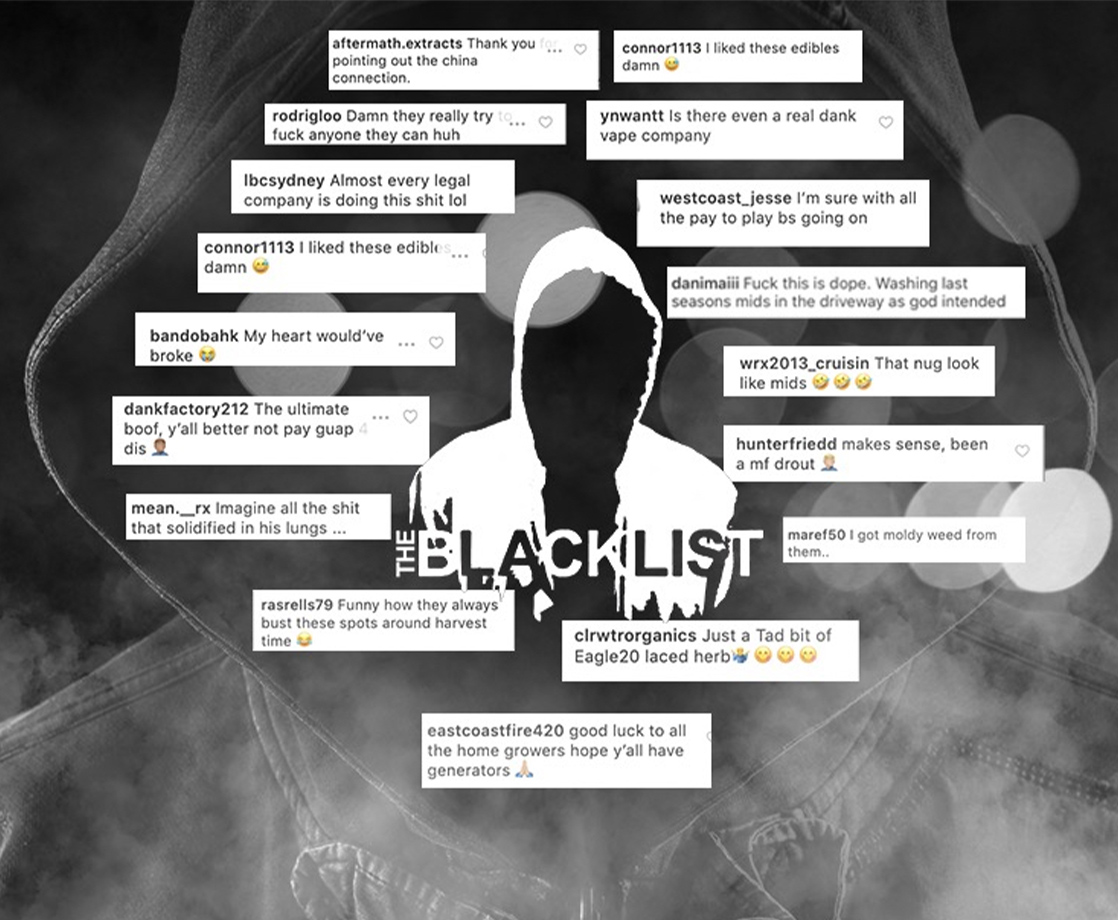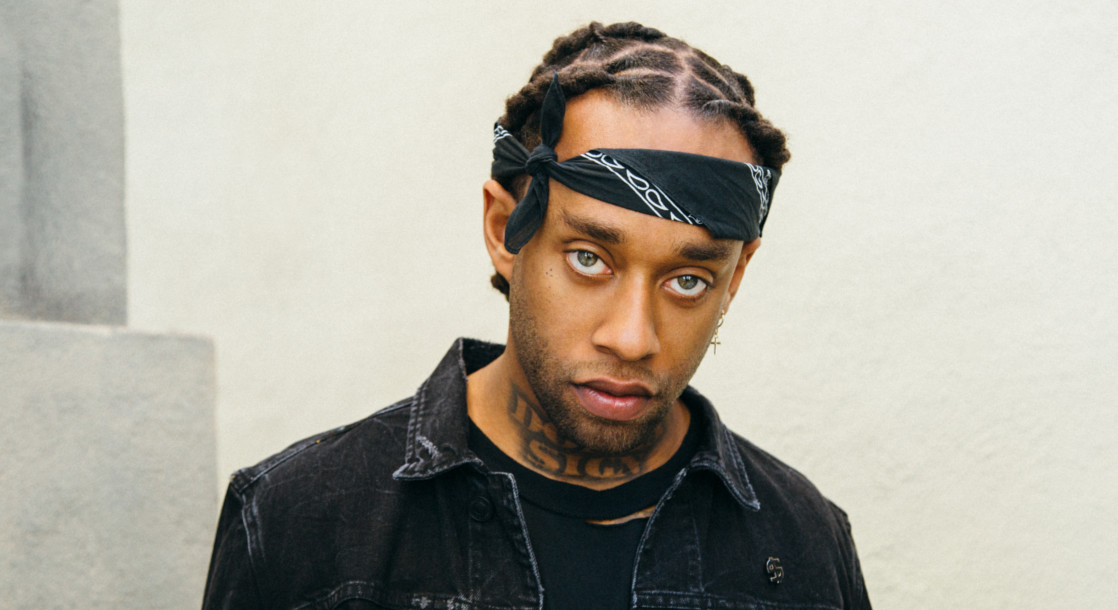Every day, news headlines characterize cannabis as either a grave social ill or as a miracle panacea that can fix everything ranging from drug addiction to poverty. And it seems like as soon as one study comes out confirming cannabis’s useful properties, another study is published that contradicts the previous one.
How can the general public discern what’s true and what’s false when the mainstream media can’t even sort out basic facts about weed? How are lawmakers, activists, lobbyists — and yes, even the average cannabis consumer — supposed to make sound, informed decisions when discussions addressing legalization are drowned out by constant sensationalist noise?
The solution to this maddening cannabis cacophony may be The Blacklist, a project run by a team of anonymous cannabis activists and advocates who curate news stories that could impact legalization’s trajectory. The Blacklist exists as both a website and as an Instagram account, though its members do not produce any original content. Rather, they collect these stories, blast them on social media, add captions for context (sometimes with a healthy dose of editorializing), then let the cannabis community chime in with individual perspectives, anecdotes, and ideas.

“The actual pioneers, and the actual consumers who’ve been using marijuana forever, they really lost their voice” once corporations began to dominate legalization in the US, The Blacklist told MERRY JANE. “They didn’t get a say in any of it, really.”
“Our goal is to continue to provide a voice for the voiceless and to bring accountability to the regulated industry,” they continued. “That’s really the bottom line. And we do this by pushing information in the correct way.”
The Blacklist originally started in 2017 as a platform for cannabis business leaders to verify the reputations of other cannabis employees and businesses at a time when there really was no way to confirm who was who. Many weed workers and business owners transitioned from the underground market to the legal, licensed industry, meaning their pasts were obscured under the shadow of prohibition. After all, it’s not exactly like you can call up an illicit grower’s old bosses to confirm if they showed up to work on time or didn’t steal any product.
But serving as a digital resume service isn’t what The Blacklist does anymore. Since its inception, the team discovered it could provide far more value to the cannabis community by simply offering a platform for people to discuss the hottest, most controversial topics involving both the so-called “traditional market” and the nascent regulated one. Currently, The Blacklist has over 114,000 followers on its primary Instagram account, which, they say, garners over 20 million impressions per month.
How did The Blacklist get such a following? A recent example involves the big “marijuana bust” — that actually turned out to be hemp — staged by the NYPD that made headlines on November 3rd. By the next day, a relative of the hemp grower reached out to The Blacklist and explained what actually happened. It took another day or two for the media to catch on and report the bust’s corrected information.
Another example: Two weeks ago, news outlets reported that heroin-laced weed vapes poisoned two teens in West Virginia. It turns out the vapes weren’t “laced” weed vapes at all, but were black market vapes made with heroin and other opioids. The case didn’t even involve cannabis, and The Blacklist cleared that up while the news story was still hot.
To find out how The Blacklist morphed into the watchdog and disruptor that it is today, MERRY JANE spoke with its anonymous founder over the phone about how it operates, why its members choose to stay behind the figurative curtain, and which topics within the cannabis space the media has brutally bungled as of late.
This interview has been edited for length and clarity.

MERRY JANE: Why does the team behind The Blacklist choose to remain anonymous?
The Blacklist: There’s power in anonymity, and the power lies in the freedom it grants. In the end, it allows the words to stand by themselves. The Blacklist is a community, and our website and our Instagram account are platforms fueled by the engagement with that community. It’s bigger than just one person. The Blacklist has held major companies, murderers, robbers, and everything in between accountable. Even though the content we post is all user generated, there is an undeniable risk factor involved with what we’re doing.
Ultimately, who we are is not relevant. We simply host the platform. If we reveal our identities, it becomes a discussion, it becomes a debate, it becomes an argument. We keep our opinions completely out of it, and we never use The Blacklist for personal reasons. That keeps the focus on the big issues at hand.
How’d you come up with the idea for this project?
We launched the website in October 2017, and it was built in a way where we could track what people were searching, like keywords. We noticed very quickly that people were not using this site for double-checking people’s reputations, which was the original intention. Instead, they were using the website for our news information. So, it occurred to us that there’s an even bigger gap when it comes to consumer knowledge about products in the market.
Rather than continuing to brand The Blacklist as a platform to expose bad actors, it kind of took on a life of its own, and it became about black market products, people operating in the black market, and pushing the community toward legalization. We’re trying to fill the gap of information that exists between the black market and the regulated market.
That’s really the position that we take now. There are consumers who’ve been buying off the black market for so long — especially when it comes to vaping — and a lot of people are just now learning that many of these dispensaries and popular brands aren’t real companies.
How is the community, and The Blacklist, evolving today?
We want to use this platform for the greater good, and we eventually want to move away from the black market stuff and more toward the injustices in the legal market itself.
We’re an industry that needs integrity. The mainstream public sees us as a bunch of stoners, and within the community there’s constant infighting. Why are we hurting our own people, in our own circle? You know? It’s just silly.
We spend a lot of time fighting with the wrong people. We should be coming together and going after the really big injustices. We’re hoping that’s what happens. Those are the stories that we like. Stories where we can affect things in a big way and help bring attention to these issues that are going on inside of legal dispensaries, so they’re more accountable for what they’re doing.
You mentioned that The Blacklist’s mission is to fill knowledge gaps between the illicit and regulated markets. Why is filling this knowledge gap critical right now?
It’s critical because of all the misinformation that’s out there. It’s critical because corporate legalization is taking over, and we’ve seen how we’ve seen how well that’s gone [laughs]. The laws are written by a lot of non-pot smokers. The actual pioneers, and the actual consumers who’ve been using marijuana forever, they really lost their voice in all of this. They didn’t get a say in any of it, really.
Our goal is to continue to provide a voice for the voiceless and to bring accountability to the regulated industry. That’s really the bottom line. And we do this by pushing information in the correct way.
Basically, you can’t have it both ways. The genie is out of the bottle. We’re not going back in time. Everybody is eventually going to have to get on board with legalization.

What has media gotten blatantly wrong regarding cannabis lately?
[Laughs] Here’s an example: The story that recently went out about the guy who went to the McDonalds drive thru, who said he drank McDonald’s tea filled with bags of weed and got really high. The mainstream media left out the entire conversation about decarboxylation [activating THC with intense heat], and how his claim is false because cannabis drinks don’t work that way.
The media recently published a story about a woman getting her legs amputated due to a CBD cart. Those headlines were false. The woman was a diabetic and already at high risk for losing her legs. She was using CBD vape as relief for her illness but the headlines ran with CBD caused a woman to lose her legs. The truth is almost always in the comments; not the article itself.
And this whole thing with vaping, with the propaganda surrounding vitamin E acetate, is really annoying. We’re not having the conversation about heavy metals, that these carts have a shelf life, that no one is retesting the carts nine months to a year after they’ve been sitting in stores. There’s just a lack of research, overall.
You don’t believe that vitamin E acetate is causing the vaping health crisis?
We have to see more information that supports it. But right now, there’s literally no lab test proving it’s vitamin E acetate. And if you read the articles, that’s what’s so funny. The headlines have nothing to do with the article itself! It’ll say something like, “The vaping illness is caused by vitamin E acetate,” and then you’ll read further down in the article, and it will say, “Oh, we don’t really know if this is what’s really causing it.”
What positive shifts have you seen with media’s cannabis coverage?
We’ve seen one piece that was done really well. The California Department of Fish and Wildlife produced a video about a farm, Huckleberry Hill in Northern California, and they highlighted the great things this farm has been doing to be environmentally conscious. It’s content like that, when the press actually goes out and interviews a cannabis company, and documents the way that they’re doing things correctly — those are great pieces of content.
It’s frustrating that it’s all fear-mongering headlines pushing against legalization when, in actuality, our country is moving toward legalization. And the news media should support that.
What do you wish people were talking about more?
People should be talking more about how cannabis is helping them medicinally. Listening to the patient and to the consumer who were against marijuana but who have now found relief and a better quality of life through marijuana is incredibly crucial. There’s little scientific consensus that marijuana works for most medical conditions, but there are all of these marijuana users out there who can tell you how it’s helped them. And that’s the best way for us to learn from each other right now.
How do you and your team select which stories to highlight day by day?
There are a few different approaches. Number one is really the ease of the story. Is it easy to post? If someone sends us something in our DM, it makes sense, it’s got a photo, it’s postable, and we don’t have to ask for more information, that’s a given. Those are easy posts.
Another way is someone will bring up a problematic company to us, and then we’ll check our messages the next day and have six other people contact us about that same company. So, it’s looking at trends and breaking news. We look at marijuana news all day long, and we’re looking for headlines that are relevant to the community.
Posts also build on themselves. We’ll post something, and someone will have a question. For instance, we made a post about one company’s pre-rolled joints, and someone commented that they tasted like “blasted trim.” Then several followers asked what blasted trim was, so we try to post additional stories that answer questions our followers asked in the thread.
Trudging through news headlines day after day, and verifying those stories, is practically a full-time job. Does The Blacklist accept donations to keep the project going?
We don’t accept donations because we don’t want people to get the impression that we pay for stories. Our goal to monetize our website — and everyone needs to know how we’re going to do that — is to build solution-based marketing and to work with the ancillary businesses that support the industry as opposed to advertising the cannabis brands themselves.
So, basically you’re looking for sponsors that have a stake in the industry but no stakes in a particular weed company or brand, like LED light suppliers and fertilizer companies?
Exactly. But it’s still a process we’re experimenting with.
If someone wants to get a story to you, what’s the best way to do that?
Post it to the website, then let us know that it was posted on the website so we can repost it on Instagram.
Instagram is really just a marketing tool for the website. People send us content through our Instagram DMs all the time. The problem with that: Instagram is not a secure platform. Sending us information through Instagram doesn’t guarantee that you will remain anonymous. It’s really important to us that our followers feel safe. We’ll always respect their privacy. But, if they go to The Blacklist website, there’s no login or email required. They can just post up their story and share it. But afterward, they can contact us on Instagram to let us know that they posted to the website.
Does The Blacklist have any future plans for expansion, new content, anything like that?
The future plan for The Blacklist is to continue to evolve with the industry. Saying that we have a set end goal is kind of premature, because the cannabis industry is in such turmoil; it’s like trying to drop an anchor to the bottom of the ocean during a violent storm. So, we’ll just change with the industry and see where it takes us.
Follow The Blacklist on Instagram, and visit their website at theblacklist.xyz
Follow Randy Robinson on Twitter











